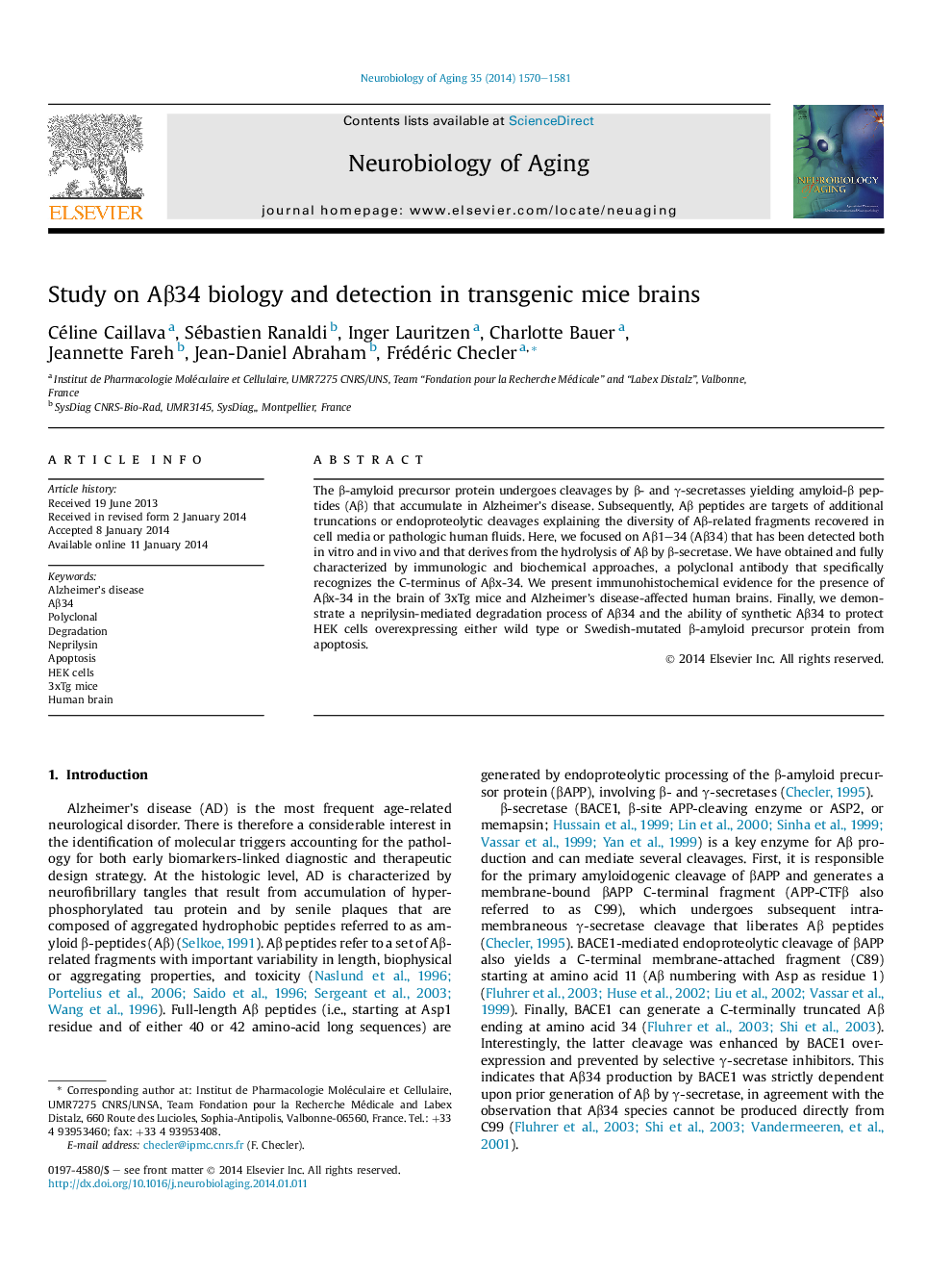| Article ID | Journal | Published Year | Pages | File Type |
|---|---|---|---|---|
| 6805803 | Neurobiology of Aging | 2014 | 12 Pages |
Abstract
The β-amyloid precursor protein undergoes cleavages by β- and γ-secretasses yielding amyloid-β peptides (Aβ) that accumulate in Alzheimer's disease. Subsequently, Aβ peptides are targets of additional truncations or endoproteolytic cleavages explaining the diversity of Aβ-related fragments recovered in cell media or pathologic human fluids. Here, we focused on Aβ1-34 (Aβ34) that has been detected both in vitro and in vivo and that derives from the hydrolysis of Aβ by β-secretase. We have obtained and fully characterized by immunologic and biochemical approaches, a polyclonal antibody that specifically recognizes the C-terminus of Aβx-34. We present immunohistochemical evidence for the presence of Aβx-34 in the brain of 3xTg mice and Alzheimer's disease-affected human brains. Finally, we demonstrate a neprilysin-mediated degradation process of Aβ34 and the ability of synthetic Aβ34 to protect HEK cells overexpressing either wild type or Swedish-mutated β-amyloid precursor protein from apoptosis.
Related Topics
Life Sciences
Biochemistry, Genetics and Molecular Biology
Ageing
Authors
Céline Caillava, Sébastien Ranaldi, Inger Lauritzen, Charlotte Bauer, Jeannette Fareh, Jean-Daniel Abraham, Frédéric Checler,
